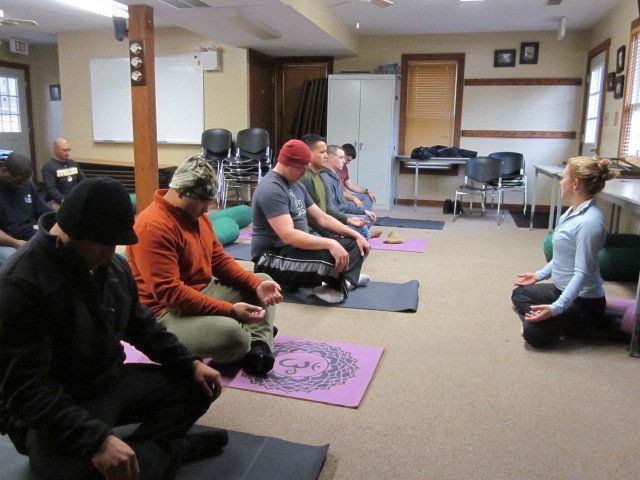
What do Madonna, Matthew McConaughey, and Jennifer Aniston have in common with our veterans?
Yoga. With this celebrity fitness secret now going mainstream, even our veterans are hitting the yoga mat. Why? To treat their Post Traumatic Stress Disorder. It's the latest proof that, sometimes, a harmonious brain-body connection is the best medicine.
With more than one-third of our veterans suffering from PTSD, it's clear that the go-to therapies -- pills and prescriptions -- aren't solving the problem. But interestingly enough, research shows that trauma-sensitive yoga, which uses breathing, stretching and meditation, can help calm the portion of the brain that gets hyper-aroused during a stress episode -- no medication required.
If you've ever practiced yoga or meditation, this probably doesn't surprise you. Yoga has been known to have a cathartic effect, unlocking a person's repressed emotions. And in the case of PTSD, it can help a person shift his or her focus inward, away from the stress and trauma, by triggering the parasympathetic nervous system. Yoga isn't a substitute for warranted medical care, but it is an integrated, evidence-based strategy that will help people cope, heal, grow and thrive.
In my day-to-day work with veterans, I have seen firsthand how a three-prong Brain-Body-Breath approach helps them turn post-traumatic stress into post-traumatic growth. Here's how holistic PTSD therapy works:
Brain
The first step in treating PTSD is to help an individual communicate emotions in a safe, constructive way. After engaging in talk therapy, counseling and peer groups, I begin to see our warriors develop constructive tools for grieving and expressing their emotions.
Body
Another crucial aspect of overcoming trauma is to be at ease with one's body. Through practices such as trauma-sensitive yoga, individuals can train their bodies to use relaxation and awareness as tools when turmoil or stress arise.
Breath
Through proper breathing and mediation, individuals with PTSD can learn to become rooted in the present moment, which will help them overcome PTSD-related trauma episodes that often occur without a moment's warning. Meditation can also improve a person's stress release, mood and ability to relax.
This trifecta of wellbeing keeps myself and the veterans I work with balanced, joyful and able to persevere no matter what curveball life throws. This integrated, holistic approach to healing helps PTSD sufferers turn their trauma into growth. And here's the best part: The only side effects are peace of mind, happiness, and a more centered view on life.